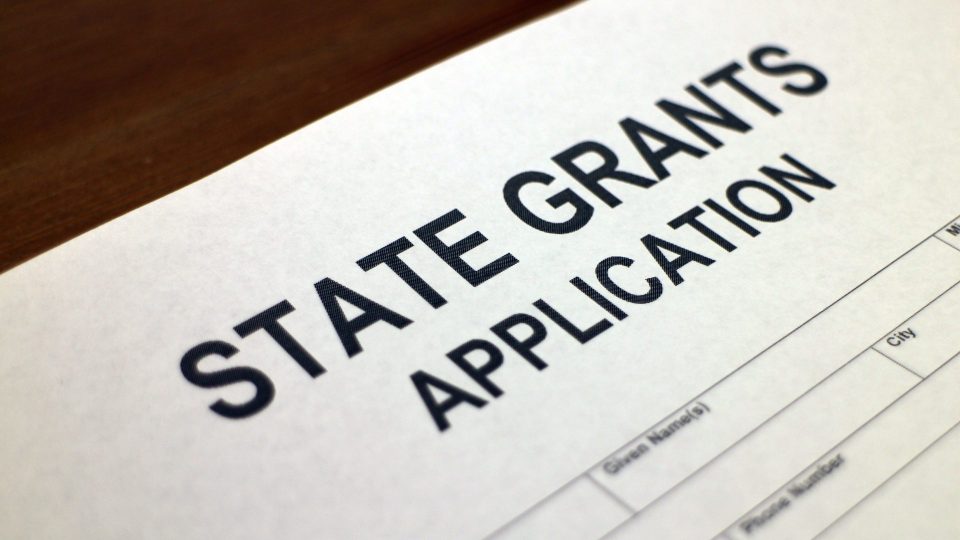Restaurant startups need substantial capital, with costs reaching up to $175,500 for a small establishment. Restaurant owners can access many funding opportunities that provide $5,000 to $500,000 in financial support.
The government has set aside $4 billion for restaurant grants across different categories. Federal and state programs also provide specialized restaurant startup grants that target minority-owned businesses and rural establishments. This complete guide shows you how to find, apply for and secure these grants to fund your restaurant’s future.
Restaurant Start-up Grant Basics
Restaurant grants come with special benefits since you don’t need to pay them back. This makes them perfect for funding your business. These financial tools help both new and existing restaurants, especially when you have specific business needs and growth plans.
What these grants cover
Your restaurant’s success depends on covering various business expenses through these grants. The Restaurant Revitalization Fund stands out as one of the biggest programs. It lets you spend money on business payroll, mortgage payments, rent, utilities and maintenance costs.
These grants also help with specific needs like building outdoor seating areas, protective equipment and cleaning supplies. The funding covers your food and beverage costs, including raw materials and supplies you need to run daily. Many state grants reward restaurants that work with local farmers to promote eco-friendly business methods.
How much you can get
Grant amounts change by a lot based on the program and what you need. The Restaurant Revitalization Fund gives up to $5 million per location. Businesses with multiple locations can get up to $10 million total. The program will give a minimum grant of $1,000 to make it accessible.
Private organizations are a great way to get substantial funding too. DoorDash’s Restaurant Disaster Relief Fund gives $10,000 grants to help restaurants bounce back from natural disasters or bad weather. Restaurants with three or fewer locations and yearly revenue under $3 million per spot can apply.
The FedEx Small Business Grant Contest is a chance to get up to $25,000 for creative restaurant ideas. State governments run their own grant programs too. The amounts change based on location and what the program wants to achieve.
Finding the Right Grant Program
Finding the right grant program for your restaurant means knowing where to look and what each source can give you. Let’s look at the main funding channels you can tap into as a restaurant owner.
Government sources
The federal government runs Grants.gov, a complete database with thousands of grant opportunities. This platform serves as your gateway to federal funding programs. You can search based on your industry, location and specific business needs.
State-level grants come with less competition and are more available to business owners. To cite an instance, California gives various grants to local restaurants that serve underserved communities. The Restaurant Revitalization Fund gives funding up to $10 million per business and $5 million per location.
Private organizations
Many corporate entities run substantial grant programs to help restaurant owners. FedEx Small Business Grant Contest gives up to $25,000 to restaurants with innovative concepts. DoorDash’s Restaurant Disaster Relief Fund helps establishments hit by natural disasters with $10,000 grants.
Private funding sources target specific restaurant types or owner backgrounds. These programs need less paperwork than government grants but might give smaller amounts. In spite of that, they give targeted support that can be valuable.
Industry-specific options
Restaurant-specific grant programs have grown by a lot. The Restaurants Care Resilience Fund, a specialized program, has given $7.30 million to 1,603 independent restaurants since 2021. Their grants help with equipment upgrades (47%), technology improvements (24%) and employee training (23%).
The Amber Grant program gives dedicated funding to restaurants and food businesses every March. Whatever your restaurant’s size, these industry-focused grants do more than provide money – they often include mentorship and business development resources.
Your restaurant’s specific needs and eligibility requirements matter when picking grant programs. To cite an instance, some programs need less than $3 million in annual revenue or limit applications to places with fewer than five units. So, good financial records and business documentation will make your applications stronger across funding sources.
Step-by-Step Application Guide
Restaurant owners need careful planning and organization to win grant applications. A well-organized approach to applying will boost your chances of getting funding.
Creating your grant calendar
Your grant calendar will guide you through the application process. This practical tool helps you track when submissions are due, when to follow up, and when you’ll hear about awards. Your calendar should list grant names, organizations giving the funds, and when you need to finish your research and writing.
We created different entries for each report we needed. Make sure your calendar shows what kind of report you need and lists all the data points required. Give yourself extra time before big deadlines in case of delays or surprises.
Gathering proof of eligibility
The Small Business Administration and other funding groups need specific documents to check if you qualify. So, get these important documents ready:
- Business tax returns (IRS Form 1120 or Form 1120-S)
- Bank statements and financial records
- Point of sale reports, including IRS Form 1099-K
- Income statements or profit and loss statements
- IRS Form 4506-T for tax information verification
Specialty places like brewpubs, bakeries or inns need extra proof that shows onsite sales make up at least 33% of gross receipts. You’ll need Tax and Trade Bureau forms or your own revenue reports.
You can submit applications through SBA-approved Point of Sale vendors or online portals directly. Right now, Square, Toast, Clover and NCR Corporation (Aloha) are the POS providers that participate. These platforms make submitting easier by using your existing business data.
Look through all eligibility requirements carefully before you submit. It’s great to aim high, but focus on grants you’re most likely to get. You can always ask grant programs for help if you have questions about documents or how to submit them.
Making Your Application Stand Out
Your grant application needs more than simple eligibility requirements. A compelling narrative that captures attention makes all the difference. Your application becomes memorable among hundreds of submissions when you combine a well-crafted story with solid evidence of results.
Telling your restaurant’s story
Your restaurant’s story should go beyond facts and figures to connect emotionally with grant reviewers. Share your unique vision and explain how your establishment meets a specific community need. Make your restaurant stand out by focusing on its distinctive qualities.
Grant reviewers go through hundreds of applications, so your narrative must leave a lasting impression. Don’t just mention your need for equipment. Tell them how new kitchen tools will help your Chefs create innovative dishes and allow your Line Cooks to serve more customers quickly. Your team’s expertise and passion deserve the spotlight, especially when you show how the grant will boost their capabilities.
Showing community impact
The best grant applications show clear benefits to the community. You can prove your impact with specific examples of local initiative support and job creation. To cite an instance, many grant programs favor businesses that create jobs for minority and low-income individuals.
Grants typically go to restaurants that align with the funding agency’s goals rather than those just showing the greatest need. Back up your community involvement with concrete data about local supplier partnerships and neighborhood employment statistics.
Proving financial need
Let your financial documentation paint a clear picture of your restaurant’s current situation and future potential. Present your numbers clearly and show how the grant will strengthen specific areas of your business model.
Build a “resume” for your business with answers to common questions from grant providers. Include detailed projections that show the grant money’s impact on your operations. If you’re asking for equipment funds, show how this investment will boost service capacity or cut operational costs. Note that most grant programs want regular updates on fund usage and progress toward goals.
Using Your Grant Money Wisely
Managing grant funds needs close attention to spending guidelines and documentation. You need to understand qualified expenses and their tracking methods to maintain compliance with grant requirements.
Approved expenses
Grant funding supports a wide range of operational needs. Your restaurant can use these funds for several key business areas:
- Business payroll costs and employee benefits
- Mortgage obligations and rent payments
- Utility payments and maintenance expenses
- Construction of outdoor seating areas
- Business supplies and protective equipment
- Food and beverage expenses, including raw materials
- Supplier costs for essential operations
- Standard business operating expenses
These funds must support your restaurant’s daily operations. So, certain restrictions apply – you cannot use the money for business expansion or opening new locations.
Prepayment of rent, principal or interest is not allowed under most grant programs.
Record keeping requirements
Documentation is the foundation of grant compliance. You must track every expense paid with grant funds and maintain simple financial records. This means keeping detailed receipts, invoices and payment records for all transactions.
The Internal Revenue Service requires you to keep books and records that show compliance with tax rules. Your documents must support all income, expenses and credits reported on your annual returns. Most grant programs need you to keep all financial records for three years, starting from the date of your final expenditure report.
Grant monitors can review your documentation anytime. These reviews look at both financial records and program execution. You must provide access to all grant-related documentation and cooperate with any audit or review.
Good record keeping begins when you sort your documentation by category. Create separate files for:
- Payroll records and employee benefit information
- Rent or mortgage payments
- Utility bills and maintenance expenses
- Supplier invoices and payment records
- Equipment purchases and outdoor construction costs
You must prove that grant funds were spent correctly. Well-organized, detailed records satisfy compliance requirements and help track your restaurant’s progress. Note that incomplete or missing records might force you to refund grant money.
Annual reporting through your grant portal is vital for maintaining compliance. These reports show how you used the funds across eligible expense categories. Keep all documentation until you receive formal clearance from monitoring authorities, even after submitting final reports.
Keys to Long-term Success
Success after restaurant funding depends on smart planning and steady execution. Your focus should move from getting grants to putting environmentally responsible business practices in place that guarantee future growth.
Building strong relationships
Strong relationships with grant providers improve your chances of getting future funding. Trust, accountability and transparency form the foundation of these connections. Grant providers want to see their investment make a difference in your restaurant’s operations.
Open communication with funders is vital for future opportunities. Regular updates about your restaurant’s progress, challenges and achievements build credibility. Start a communication schedule with your grant providers right after receiving funding to keep them informed about your progress.
Financial management practices
Strong fiscal management is the life-blood of restaurant sustainability. Your financial tracking system should monitor these key performance indicators:
- Live visibility into spending and cash flow
- Budget-to-actual variance analysis
- Direct and indirect cost tracking
- Outcome metrics that show program success
Good documentation helps you stay grant compliant. Keep detailed records of all grant-related expenses and store these files for at least three years after your final expenditure report. A system to track both direct costs and indirect expenses shows fiscal responsibility to current and future funders.
Creating sustainable growth
Sustainability planning goes beyond financial management. Grant providers want to fund restaurants that drive positive change in their communities. You should build mutually beneficial alliances with local governments, community stakeholders and even other restaurants with similar missions.
Your operations need continuous improvement. This mindset shows your dedication to adapting and refining methods based on real-life results. Track your restaurant’s effect through measurable outcomes like job creation, local supplier partnerships or community program participation.
A culture of accountability makes your restaurant stronger. Regular performance monitoring helps spot areas for improvement and shows your commitment to excellence. This data helps refine your operations and strengthen your position for future funding opportunities.
Grant Application Template for Restaurant Owners
Writing a strong, compelling grant application can be overwhelming, but this ready-to-use template makes the process faster, easier and more effective. It follows best practices, highlights key funding priorities and ensures your restaurant stands out to grant providers. Simply fill in the blanks, customize the details and submit with confidence.
Grant Application for Restaurant Funding
[Restaurant Name]
[Restaurant Address]
[Phone Number]
[Email Address]
[Date]
To: [Grant Provider’s Name]
Subject: Grant Application for [Grant Name]
I. Executive Summary
Subject: Funding Request for [Restaurant Name] – Enhancing Sustainability and Business Growth
Dear [Grant Provider’s Name],
I am writing to formally apply for [Grant Name] to support [Restaurant Name], a community-driven [type of restaurant, e.g., farm-to-table, family-owned, minority-owned, eco-friendly] establishment located in [City, State]. Our mission is to provide high-quality, locally sourced meals while fostering economic growth and job opportunities in our community.
With the recent challenges facing the restaurant industry, securing funding is crucial for us to maintain operations, implement sustainable business practices, and ensure financial stability. We are requesting [$ Amount] in grant funding to cover essential business expenses, invest in sustainable infrastructure, and expand our workforce.
II. Business Overview
Business Name: [Restaurant Name]
Business Type: [e.g., Casual Dining, Fine Dining, Fast Casual, Food Truck, etc.]
Established: [Year]
Location: [City, State]
Annual Revenue: [Insert]
Number of Employees: [Insert]
[Restaurant Name] is a [brief description, e.g., woman-owned, family-owned, eco-friendly] restaurant known for [unique value proposition, e.g., fresh, locally sourced ingredients, diverse menu options, award-winning dishes, exceptional customer service]. Since opening in 2025, we have served thousands of satisfied customers and contributed significantly to our local economy.
We currently employ [#] staff members, including chefs, kitchen staff, and front-of-house personnel. Our team is dedicated to providing a high-quality dining experience while maintaining a commitment to sustainability and community involvement.
III. Purpose of the Grant Request
We are seeking [$ Amount] in funding to address key areas crucial for our restaurant’s sustainability, including:
Workforce expansion & employee benefits – Hiring and training additional staff to meet growing demand and ensuring competitive wages and healthcare benefits.
Operational stability & safety compliance – Upgrading kitchen equipment, improving workplace safety, and ensuring compliance with health and safety regulations.
Sustainability & eco-friendly practices – Investing in energy-efficient appliances, reducing food waste, and increasing our partnership with local farmers.
Insurance & risk management – Securing comprehensive insurance coverage to protect our business, employees, and customers against unexpected financial losses.
Marketing & community engagement – Expanding outreach efforts, implementing digital marketing strategies, and engaging with underserved communities to create employment opportunities.
With this funding, [Restaurant Name] will enhance its long-term viability, strengthen its impact on the local economy, and continue serving as a valuable member of the community.
IV. Expected Impact of Funding
Receiving this grant will allow us to:
- Increase job opportunities by [#] new hires within the next [#] months
- Implement eco-friendly practices, reducing waste by [%]
- Improve workplace conditions, ensuring compliance with [specific safety standards]
- Secure comprehensive insurance coverage to protect against financial risks
- Expand community engagement initiatives to [specific target group, e.g., low-income individuals, minority entrepreneurs]
By supporting our grant request, you are investing in a sustainable, community-driven restaurant that is committed to long-term growth, job creation, and environmental responsibility.
V. Budget Breakdown
Workforce Expansion: $[Insert]
Equipment Upgrades: $[Insert]
Sustainability Initiatives: $[Insert]
Energy-Efficient Upgrades: $[Insert]
Insurance Coverage: $[Insert]
Marketing & Outreach: $[Insert]
Total Requested Grant Amount: [$ Amount]
VI. Supporting Documents
✔ Business Registration Certificate
✔ IRS Tax Forms & Financial Statements (Last 2 Years)
✔ Business Insurance Policy Details
✔ Lease Agreement (if applicable)
✔ Marketing & Growth Plan
✔ Staff Employment Records
All required documents have been attached per the grant application guidelines.
VII. Conclusion & Call to Action
We strongly believe that [Restaurant Name] aligns with the mission and objectives of [Grant Provider Name] by promoting economic growth, job creation, sustainability, and community involvement. This grant will not only support our business but also create a lasting impact on our local economy and environment.
We appreciate your time and consideration of our application. We would welcome the opportunity to discuss this proposal in more detail and provide any additional information required. Please feel free to contact us at [Email] or [Phone Number] at your convenience.
We look forward to your positive response and the opportunity to continue serving our community with your generous support.
Best Regards,
[Your Name]
[Your Title]
[Restaurant Name]
Conclusion
Running a restaurant is challenging, but securing the right funding and comprehensive insurance can set your business up for long-term stability and success. With $4 billion in grants available, restaurant owners have a unique opportunity to access free money, invest in their growth, and overcome financial hurdles.
By applying for government, private, and industry-specific grants, you can cover critical expenses like payroll, equipment, sustainability initiatives, and insurance – all without taking on debt. At the same time, having the right insurance coverage ensures your business is protected from unexpected risks, from lawsuits to natural disasters.
FAQs About Grants for Restaurant Owners
Restaurant grants can cover a wide range of expenses, including payroll costs, rent or mortgage payments, utilities, maintenance, outdoor seating construction, protective equipment, food and beverage supplies, and other essential operating costs. However, they usually cannot be used for business expansion or opening new locations.
Grant amounts vary widely depending on the program. Some grants offer as little as $5,000, while others, like the Restaurant Revitalization Fund, can provide up to $5 million per location with a total cap of $10 million for businesses with multiple locations. Private organizations also offer grants, such as DoorDash’s $10,000 disaster relief grants.
A strong grant application should include a compelling narrative about your restaurant’s unique vision and community impact, clear financial documentation demonstrating need and potential growth and specific examples of how the grant will improve operations. It’s also important to show how your restaurant aligns with the grant provider’s goals and to highlight your team’s expertise and passion.
Restaurant owners can find grant opportunities through various sources. Government sources like Grants.gov list federal funding programs, while state and local governments often have their own grant initiatives. Private organizations and industry-specific programs also offer grants.
Restaurants receiving grants must maintain detailed financial records for all grant-related expenses. This includes keeping receipts, invoices, and payment records for all transactions. Most grant programs require a three-year retention period for all financial documents, starting from the date of the final expenditure report.

Written by Lidija Misic
Lidija holds a BA in English Language and has lived in five different countries, where she has worked in various roles, including as a flight attendant, teacher, writer and recruiter. Her biggest passion is crafting great content and reading. She is particularly passionate about creating punchy copy that inspires people to make positive changes in their lives.

Reviewed by Marcy Miniano
Marcy is an editor and writer with a background in public relations and brand marketing. Throughout her nearly decade-long career, she has honed her skills in crafting content and helping build brands across various industries — including restaurant and hospitality, travel, tech, fashion and entertainment.




